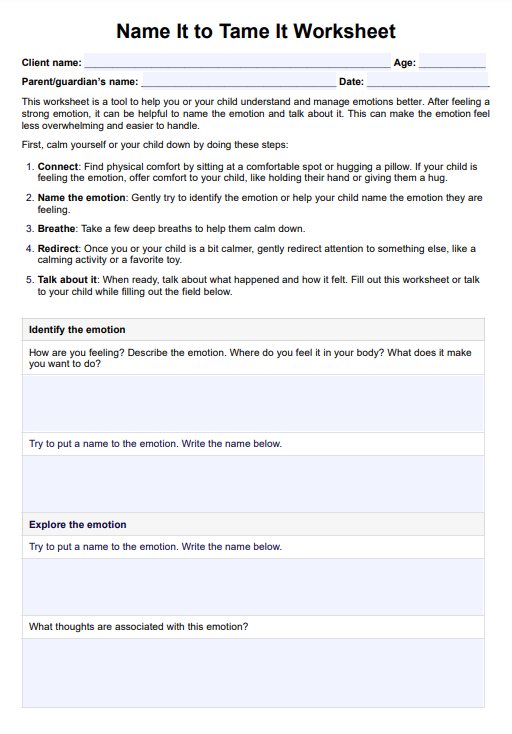The science behind "Name It to Tame It" involves recognizing and labeling emotional responses as they occur, which activates the prefrontal cortex and reduces stress responses from the amygdala, helping individuals gain control over their emotional experiences and fostering emotional regulation over time.

Name It to Tame It Worksheet
Use our Name It to Tame It Worksheet to help your young patients identify and manage emotions effectively. Download now for free!
Use Template
Name It to Tame It Worksheet Template
Commonly asked questions
An example of this technique could be a person feeling anxious before a presentation; by consciously stating, "I feel anxious," they create a mental distance from the emotion, allowing them to manage their anxiety more effectively and focus on their performance.
Taming emotions refers to the process of gaining control over one's emotional states and responses, reducing their intensity, and preventing them from negatively impacting behavior.
EHR and practice management software
Get started for free
*No credit card required
Free
$0/usd
Unlimited clients
Telehealth
1GB of storage
Client portal text
Automated billing and online payments











